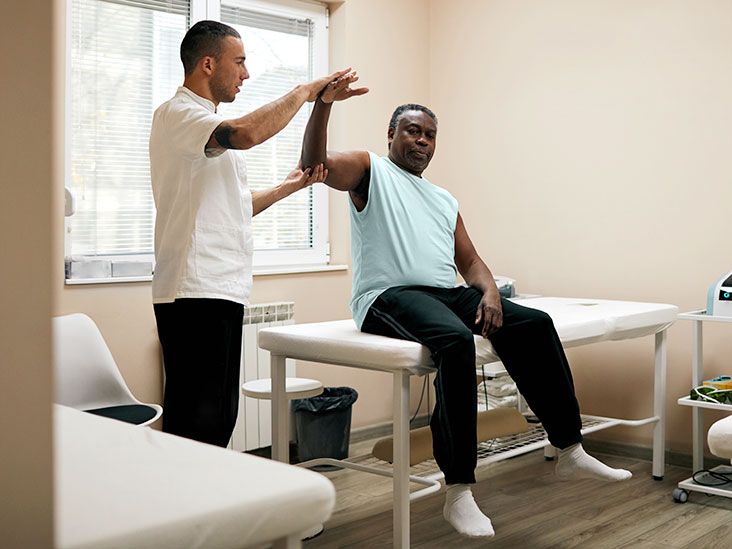How Physiotherapists Assist in Injury Recovery
Physical therapists play a crucial function in injury recovery, using their proficiency to help patients in their healing trip. Via a mix of evaluation, therapy preparation, and recurring monitoring, these experts assist people reclaim their physical functionality and improve their quality of life. The preliminary action entails analyzing the nature and degree of the injury, which enables the physical specialist to develop a tailored treatment plan tailored to the client's specific needs. This plan may include manual therapy techniques to deal with pain and improve movement, in addition to personalized exercise programs to enhance muscle mass and promote overall recovery. In addition, physical specialists give education and learning on injury avoidance and self-management, equipping individuals to take an active role in their rehabilitation process. With their knowledge and assistance, physical specialists guide clients in the direction of an effective healing, adjusting therapy as essential to ensure development is made.
Assessing the Injury and Creating a Therapy Strategy
To properly assess an injury and establish an efficient treatment strategy, physical specialists systematically review the degree of the injury and its effect on the individual's useful capabilities. This evaluation procedure is crucial as it permits the physical therapist to collect objective information and information regarding the injury, allowing them to make informed decisions regarding the proper therapy interventions.
Throughout the analysis, physical therapists make use of a variety of techniques and tools to gather information about the injury. In addition, physical therapists may evaluate medical records, diagnostic imaging reports, and various other pertinent documents to gain a comprehensive understanding of the injury.
As soon as the evaluation is complete, physiotherapists use the gathered information to establish a tailored therapy strategy for the individual. This plan might consist of restorative exercises, hand-operated treatment methods, techniques such as warm or cold treatment, and education on injury avoidance and self-management strategies. The treatment strategy is customized to attend to the particular demands and objectives of the individual, aiming to restore their useful capabilities and enhance their overall lifestyle.
Using Manual Treatment Strategies
Physiotherapists employ guidebook treatment techniques to address the details demands and goals of injured individuals, boosting the effectiveness of their therapy strategies. Manual treatment includes hands-on strategies that intend to boost flexibility, minimize pain, and promote healing. These techniques are based on an extensive understanding of composition, physiology, and biomechanics, permitting specialists to target specific locations of the body with precision.
One generally utilized hand-operated treatment technique is joint mobilization. This method involves the competent application of force to a joint, aiming to recover its typical variety of motion. By carefully activating the joint, physiotherapists can alleviate stiffness, enhance adaptability, and reduce pain.
Soft cells mobilization is another hands-on treatment technique often made use of by physiotherapists. This method entails using stress and movement to muscles, tendons, tendons, and various other soft tissues to enhance flow, lower muscle stress, and advertise recovery.
Additionally, manual therapy methods such as massage therapy and extending can help unwind muscle mass, boost adaptability, and improve overall function (Roanoke physical therapy). These techniques are typically incorporated with healing workouts and various other therapy methods to attain optimal results
Designing and Supervising Customized Exercise Programs
Structure upon the manual therapy strategies talked about previously, physiotherapists use their competence to style and manage customized exercise programs for injured individuals. These exercise programs are tailored to the particular requirements and capabilities of each individual, taking into account their injury, case history, and total objectives for rehab.
The very first step in developing a personalized exercise program is to conduct a detailed assessment of the patient's condition. Physiotherapists will examine the patient's strength, flexibility, series of motion, and practical capabilities. This evaluation assists them determine any type of locations of weak point or discrepancy that need to be attended to via targeted exercises.
Once the evaluation is total, the physical specialist will create a workout program that consists of a range of exercises targeting different muscle mass groups and motion patterns. These workouts might include extending, strengthening, equilibrium training, and cardio tasks. The specialist will certainly likewise take into account the patient's preferences, lifestyle, and available resources when creating the program.
As soon as the workout program is created, the physiotherapist will lead the individual with each exercise, guaranteeing appropriate kind and strategy. They will provide guidance and assistance, making changes as needed to guarantee the workouts are testing however not too strenuous. The specialist will certainly also track the client's development and make modifications to the program as the patient's a knockout post capabilities boost.
Offering Education And Learning on Injury Avoidance and Self-management
Furthermore, physical specialists enlighten injured people on injury prevention and self-management techniques. By offering education and learning on injury avoidance, physical specialists equip individuals with the understanding and devices essential to reduce the risk of re-injury.

Furthermore, physical specialists enlighten clients on the value of adherence to their treatment strategy. They discuss the factors behind each treatment and the expected results, making certain that people recognize the objective and advantages of their therapy. By encouraging patients with this understanding, physical specialists encourage energetic involvement in their very own recuperation process, promoting a feeling of possession and obligation for their wellness.
Monitoring Progress and Adjusting Therapy as Required

Physiotherapists use various methods to keep an eye on development. They examine the individual's variety of movement, strength, flexibility, and overall functional abilities. They may likewise utilize specialized examinations and measurements this page to track renovations and recognize locations that need further focus.
By very closely monitoring the progress, physiotherapists can recognize any kind of prospective obstructions or challenges that might occur throughout the rehabilitation process. This allows them to make prompt modifications to the therapy plan, ensuring that the therapy remains effective and pertinent to the client's needs.
Changes to the treatment plan might consist of modifying exercises, increasing or decreasing the strength of treatment, or presenting new strategies or methods to address certain areas of issue. The objective is to optimize the recovery these details process and promote a quicker and more complete recovery for the individual.
Along with keeping track of development and adjusting treatment, physical therapists also offer recurring education and learning and support to their clients. This aids them understand their problem much better, promotes self-management, and encourages them to proactively join their very own recovery.
Verdict
To conclude, physical specialists play an important function in injury recovery. They examine injuries, create treatment strategies, use hand-operated therapy methods, style customized workout programs, provide education on injury prevention and self-management, and screen development. Via their knowledge and assistance, physical specialists help individuals recuperate from injuries and reclaim optimum function and wheelchair.
